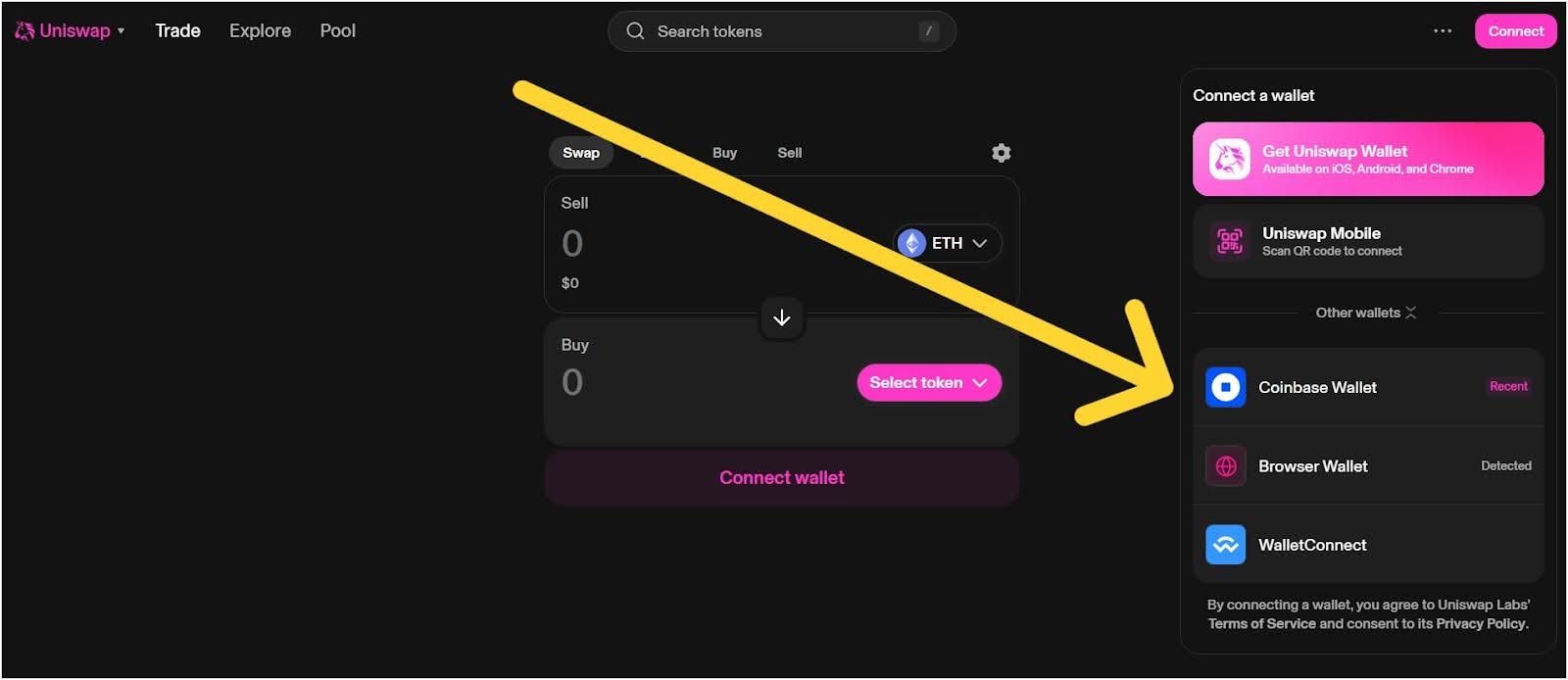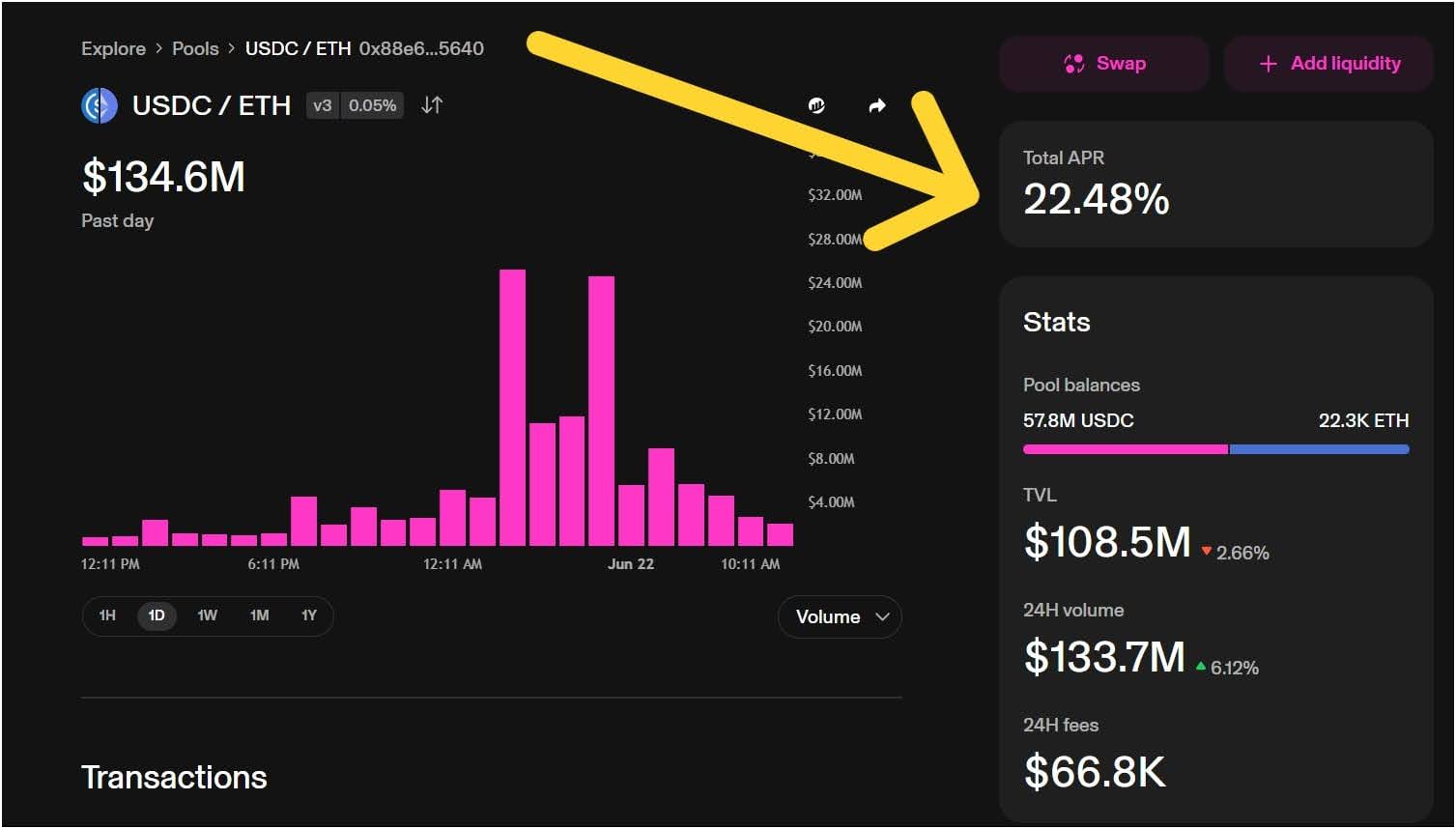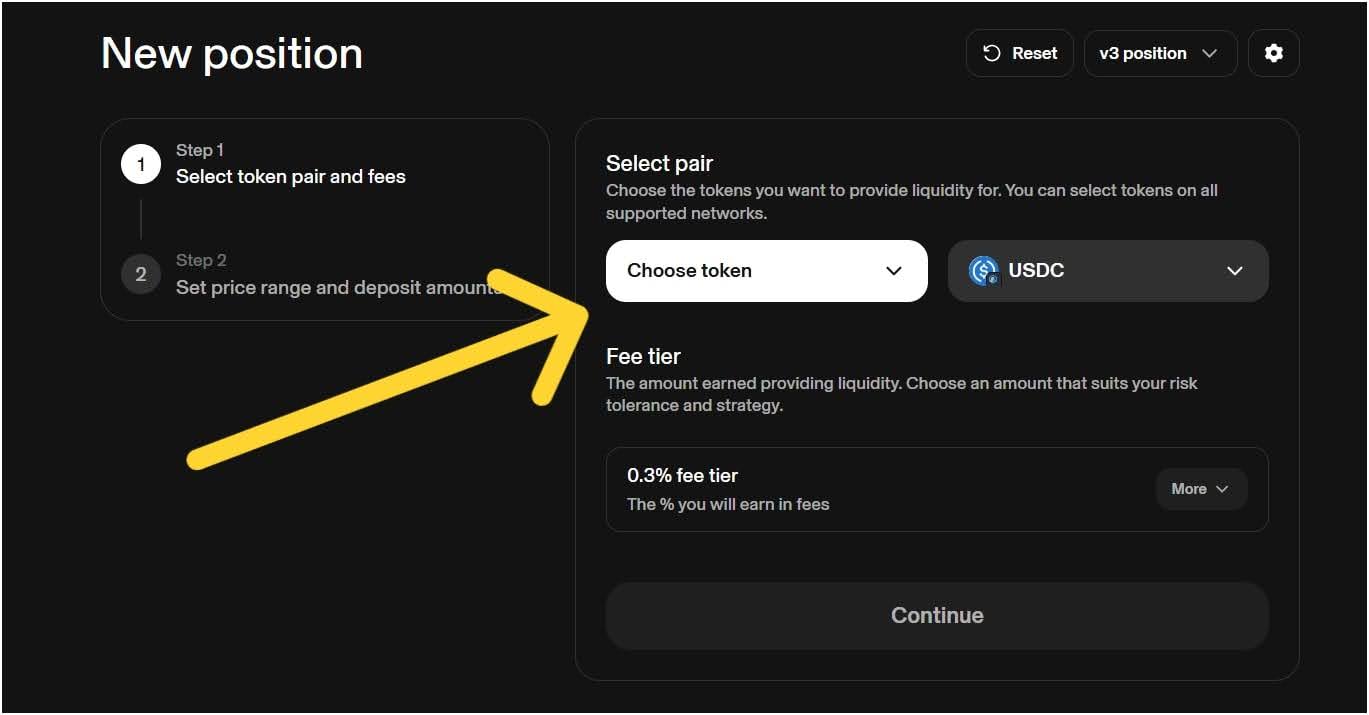Liquidity mining is a DeFi course of the place you earn rewards by including your crypto tokens to a liquidity pool. It really works by way of good contracts, letting merchants swap tokens when you earn a share of the charges and generally bonus tokens.
The advantages of liquidity mining are incomes passive earnings with out having to commerce actively. It additionally permits your idle tokens to give you the results you want by accumulating buying and selling charges. You possibly can even assist DeFi platforms keep purposeful by supplying much-needed liquidity. In return, you usually obtain bonus tokens, which can enhance in worth.
This information will cowl what DeFi liquidity mining is, its execs and cons, and the way it works. We will even clarify how you can begin liquidity mining and whether or not it’s a protected and legit course of.
What Is Liquidity Mining in DeFi?
Liquidity mining is a method to earn rewards by including your crypto to DeFi liquidity swimming pools. Usually, it’s important to lock your tokens in a pool, and in return, you’ll get rewards like further tokens or a part of buying and selling charges. One of the best platforms for a lot of the liquidity miners are Uniswap, PancakeSwap, or Curve.
Decentralized exchanges (DEXs) require these swimming pools of property, often called liquidity, to allow buying and selling for his or her customers. Usually, these platforms function on good contracts with out a government. For instance, you may put some Ethereum and a few of one other token right into a pool, largely USDT or USDC. Then, when different individuals commerce these tokens, you get a small a part of the buying and selling charge.
In easy phrases, DeFi platforms want liquidity from you to run easily. So, they provide rewards to customers who present it. It’s all the time a win-win deal, as you assist the system work, and also you receives a commission for it in return.
How Does Liquidity Mining Work?
Liquidity mining works based mostly on an structure that features Automated Market Makers (AMMs) and good contracts. A person, as a Liquidity Supplier (LP), initially chooses a liquidity pool on a DEX. The individual then has to deposit an asset pair (ETH/USDC) into the respective contract of the pool, usually in equal financial quantities.
As fee for this sediment, the good contract of the Ethereum protocol routinely mints and transfers LP tokens to the person. These tokens represent a tokenized type of that person’s specific proportion of the general property in that pool.
Liquidity mining rewards are available two levels. The primary is that the LP receives a portion of the buying and selling charges incurred in that pool every time a dealer conducts a swap. Second, for the actual “mining,” the LP usually stakes its accrued LP tokens into a distinct contract, which is referred to in some circumstances as a grasp contract. This staking motion qualifies them to earn extra rewards. These are primarily paid out within the platform’s governance token. The quantity of those mined tokens is often proportional to the variety of LP tokens staked and the length of the staking interval.
What Are the Professionals and Cons of Liquidity Mining?
Professionals of Liquidity Mining
The professionals of liquidity mining are passive earnings, excessive returns, low entry barrier, decentralization assist, and enhanced token utility.
Passive Revenue Alternative: One of many biggest points of interest is the potential to earn passive earnings. You simply put your crypto property right into a liquidity pool, and so long as they’re there, you’ll get a portion of the transaction charges that the platform generates. Your crypto is producing earnings for you with out you truly having to do something your self.Excessive Returns: Liquidity mining sometimes has actually excessive annual share charges (APRs), that are generally approach above what you’d discover in typical finance.Low Entry Barrier: You don’t should be a big investor to develop into part of it. Many of the platforms allow you to supply smaller parts of crypto, and that makes it accessible for a wider vary of people that need to discover a decentralized buying and selling setting.Helps Decentralization: With liquidity mining, you’re basically serving to exchanges and different DeFi protocols of their operations. This permits these platforms to work properly with out the necessity for central intermediaries, which is a basic idea of decentralized finance.Elevated Token Utility: When tokens are locked up in liquidity swimming pools, they’re actively used to facilitate buying and selling. This elevated utility can, in flip, improve the funding portfolio worth and total ecosystem of the tokens you’re holding.
Cons of Liquidity Mining
The cons of liquidity mining are impermanent loss, good contract dangers, studying complexity, and rug pulls.
Impermanent Loss: That is doubtless the most important threat concerned. Impermanent loss happens when the worth of the tokens you added to a liquidity pool drops considerably from while you initially added them. If a token inside a pair decreases considerably relative to the opposite, you might obtain lower than you’d have if you happen to had merely stored your tokens out of the pool.Good Contract Vulnerability: DeFi platforms rely so much on good contracts, that are principally self-executing contracts. If one thing goes fallacious or is buggy with these contracts, then hackers may find yourself exploiting them, which means you would lose your deposited cash. It’s a technical threat that all the time exists on this section.Complexity and Studying Curve: For newcomers, understanding how liquidity mining works, together with ideas like impermanent loss, pool composition, and reward mechanisms, might be fairly overwhelming. It’s not all the time a simple course of, and it requires a little bit of analysis and understanding to do it safely.Rug Pulls and Scams: There’s all the time the danger of dangerous tasks within the crypto universe. Some tasks might be designed as “rug pulls,” the place the dev group withdraws all of the liquidity from the pool with none notification, leaving buyers with worthless tokens. It’s necessary to analysis a mission fairly extensively earlier than becoming a member of.
What Are the Dangers Related With Liquidity Mining?
Dangers of liquidity mining are largely associated to value modifications, good contract bugs, and mission safety. One main threat is impermanent loss, the place token values shift and you find yourself with lower than you began. Even when the pool appears secure, sudden market strikes can harm your returns relying in your threat tolerance. One other threat comes from poorly written contract codes that hackers can exploit, which has occurred earlier than.
Liquidity mining scams are additionally widespread, the place pretend tasks promise excessive rewards after which disappear with the funds. After all, the crypto market is usually unstable, so rewards can change rapidly. Mainly, with out correct analysis, you would lose cash.
What Methods Can Assist Cut back Threat in Liquidity Mining?
First, do your analysis on the mission. Earlier than you put money into any liquidity pool, totally examine the mission’s whitepaper, its group, and its neighborhood. You need to seek for established protocols which have a strong status. This may provide help to keep away from these horrible “rug pulls” and different liquidity mining scams.
The second essential tactic is deciding on stablecoin pairs. For those who provide liquidity utilizing stablecoins (similar to USDT, USDC, or DAI), you routinely reduce your publicity to impermanent loss. Additionally, diversification is your buddy, as with all funding. Don’t make investments all of your crypto in a single liquidity pool and even on one trade.
At all times search for platforms which have had their code totally audited by respected third events. After all, this doesn’t utterly eradicate the danger of exploits, nevertheless it considerably reduces it.
What Are Decentralized Exchanges (DEXs) and Automated Market Makers (AMMs)?
Decentralized exchanges, or DEXs, are platforms the place you’ll be able to commerce crypto immediately out of your pockets. There’s no intermediary, no account setup, and no financial institution wanted. Additionally, these DEXs don’t use order books like conventional markets. As a substitute, they use one thing known as Automated Market Makers (AMMs).
Now, an Automated Market Maker (AMM) is a sort of DEX, nevertheless it works just a little in a different way. As a substitute of counting on an order e-book the place patrons and sellers listing their desired costs, AMMs use a particular mathematical formulation to set the costs of property. These formulation function on liquidity swimming pools. So, as a substitute of buying and selling with one other individual, you’re basically buying and selling immediately with this pool of property.
How Do DEXs and AMMs Allow Liquidity Mining?
DEXs, particularly these powered by AMMs, want a relentless provide of cryptocurrency of their swimming pools to facilitate all these trades. If there isn’t sufficient crypto within the swimming pools, trades develop into tough, and costs fluctuate.
These swimming pools want liquidity provision to operate, and that’s the place liquidity mining is available in. Whenever you add digital property to a pool, you assist the system run, and in return, you earn rewards. Usually, these rewards come from buying and selling charges and bonus tokens. AMMs deal with all trades from these swimming pools, so each commerce provides a small charge to the individuals who added tokens.
What Is a Liquidity Mining Pool and How Does It Work?
A liquidity mining pool is a great contract that holds two tokens, like ETH and USDC. You deposit an equal worth of each tokens into the pool. The pool then permits merchants to swap between them.
Right here’s the way it works: When somebody needs to commerce, say, ETH for USDC, they don’t purchase it from one other particular person. As a substitute, they work together with this pool. The AMM’s formulation determines the trade fee based mostly on the present ratio of ETH to USDC within the pool. When a commerce occurs, a small charge is often charged, and this charge is then distributed proportionally amongst all of the liquidity suppliers based mostly on how a lot they’ve contributed to the pool. So, the extra liquidity you present, the bigger your share of the rewards.

How one can Begin Liquidity Mining?
To start out liquidity mining, it’s essential select a crypto pockets and deposit your funds into it. Then, join the pockets to a DeFi protocol like Uniswap. After that, choose a token pair and supply liquidity to the protocol.
Step 1: Get a Appropriate Pockets and Some Crypto
Very first thing you’ll want is a non-custodial crypto pockets that may hook up with your chosen decentralized functions (dApps). Now, be sure you have some cryptocurrency in it. To start out liquidity mining on Uniswap, you’ll usually want two completely different tokens of equal greenback worth for the liquidity pool. So, if you wish to add to an ETH/USDC pool, you’d want, say, $100 price of ETH and one other $100 price of USDC. You should buy tokens from standard centralized exchanges like Binance. If you wish to know extra, right here is our in-depth Binance overview.
Step 2: Head to the DEX and Join Your Pockets
Go to the Uniswap web site (app.uniswap.org). On the location, you’ll see a “Join Pockets” button, which is often within the high proper nook. Click on that and observe the prompts to attach your MetaMask or different appropriate pockets. It’ll hyperlink your pockets to the Uniswap platform.


Step 3: Select Your Liquidity Pool
Upon getting related your pockets, it’s essential navigate to the “Pool” part. You’ll then want to pick out which pair of tokens you need to present liquidity for. Uniswap presents numerous swimming pools, and also you’ll usually decide one that you simply’re comfy holding each tokens for. Keep in mind, you’ll want to supply an equal worth for every token.
On Uniswap v3, you additionally get to decide on a charge tier and a value vary; this allows you to focus your liquidity, which may earn extra charges but additionally may be very dangerous because it will increase impermanent loss threat if costs transfer out of your chosen vary.


Step 4: Deposit Your Tokens and Get LP Tokens
You’ll must enter the quantity of tokens you need to deposit. The platform will routinely calculate the corresponding quantity of the opposite token wanted. Now, affirm the transaction in your pockets, and your tokens can be added to the liquidity pool.
In return, you’ll obtain “LP tokens” (Liquidity Supplier tokens), which you’ll be able to name a receipt representing your share of that pool. These LP tokens are what you maintain to show your contribution and to later declare your share of the charges and rewards.


How Do Liquidity Suppliers Contribute to Liquidity Mining?
Liquidity suppliers contribute to mining by becoming a member of a pool after which depositing two tokens of equal worth, like ETH and USDC. These tokens assist merchants swap between pairs on decentralized platforms. In return, the supplier earns rewards, often from buying and selling charges and generally bonus tokens. The extra they add, the extra they earn. Mainly, with out these suppliers, the platform received’t have sufficient liquidity for clean trades. You can too discover our information on exit liquidity to be taught extra in regards to the crypto liquidity half.
Is Liquidity Mining Worthwhile?
Sure, liquidity mining might be worthwhile, however there are a lot of related dangers. The profitability depends upon issues just like the buying and selling quantity within the pool, the particular reward tokens supplied, and crucially, how properly the costs of the deposited property maintain up. Excessive buying and selling volumes imply extra charges distributed, and if the motivation tokens achieve worth, that’s a bonus. However threat publicity, like impermanent loss and market volatility, can have an effect on earnings. So sure, it might work, nevertheless it’s not assured earnings.
Is Liquidity Mining the Similar as Yield Farming?
No, they’re not fairly the identical, although they’re very intently associated. Liquidity mining focuses purely on offering liquidity to a decentralized trade’s swimming pools and incomes rewards for doing so.
Now, yield farming is a a lot wider technique that entails transferring crypto property throughout numerous DeFi protocols to seek out the very best returns, which may embody lending, borrowing, and staking, along with liquidity mining. So, liquidity mining is part of yield farming.
Is Liquidity Mining Legit?
Sure, liquidity mining is legit when carried out on trusted DeFi platforms like Uniswap, Curve, or Aave. It really works by way of good contracts and rewards customers who assist the system with liquidity. However scams do exist, particularly from pretend or unverified tasks.








